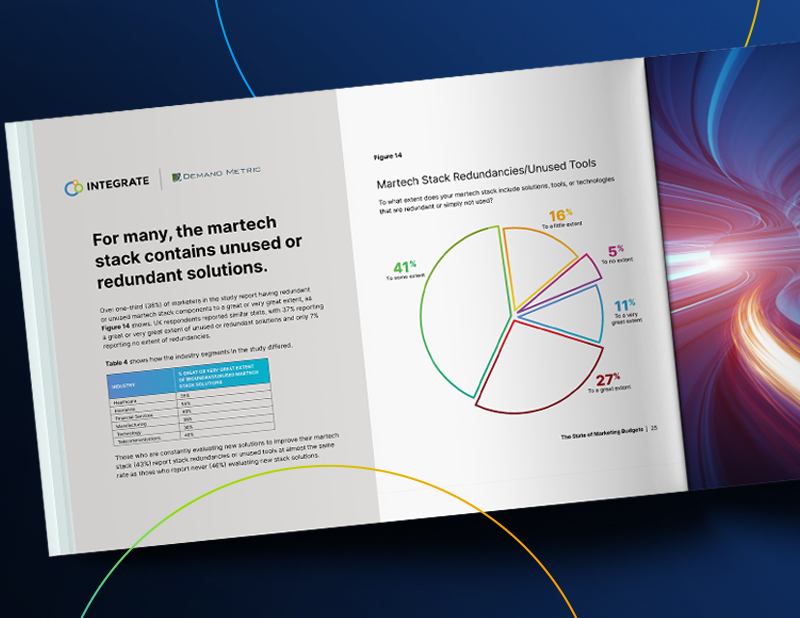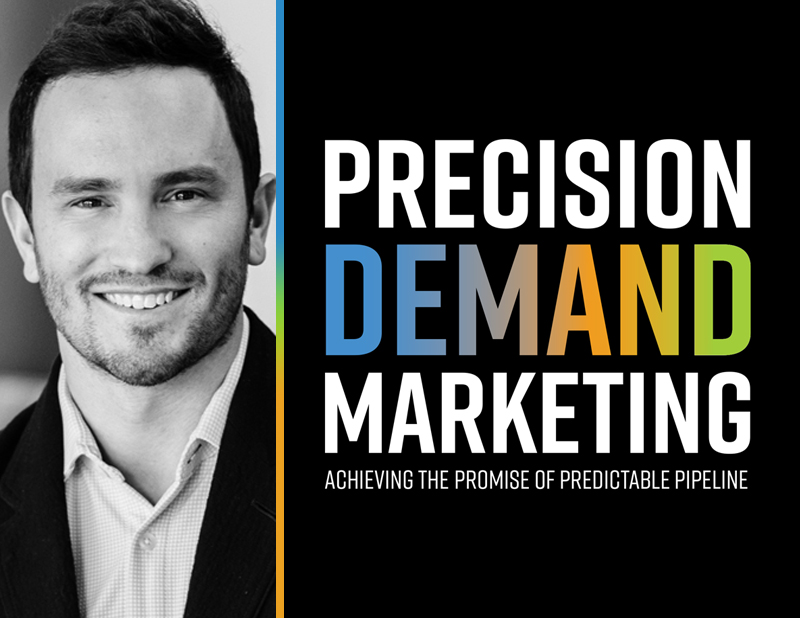In researching and writing our new book Precision Demand Marketing: Achieving the Promise of Predictable Pipeline, Jeremy Bloom, Integrate’s CEO, and I, interviewed numerous customers, partners, and marketing thought leaders. Their answers unearthed an incredible amount of context, best practices, and practical examples of how they have successfully incorporated a Precision Demand Marketing (PDM) approach at their current or former companies.
We’re extremely thankful for the time they gave and the insights they provided, a fraction of which we’ll share below. So, what were some of the big takeaways?
Precision Demand Starts with a Relentless Focus on Buyers
B2B buying behaviour has changed to be more self-service and digital. As a result, B2B buyers act much more like B2C buyers and have higher expectations of being heard, known, and understood. PDM starts with your buyer. It’s about knowing them, understanding their needs, and providing relevant content and experiences for them. Our customers and marketing thought leaders are embracing this mindset:
"Fortinet believes that while the importance of storytelling remains the same, targeting, personalising, channel strategy, and tactics have changed with the digital revolution. PDM opens an efficient and effective way of doing marketing that wasn’t possible with the old methodology. To strike the right balance requires keeping the buyer at the center of marketing. Every marketer must think: How is what I’m doing helping the buyer and, in turn, the company?” – Jaime Romero, Vice President of Marketing, Fortinet
"I would love for the company that is trying to market a product to me to understand what my company needs. I want them to show me how they can solve my problem and why I should work with them." – Bala Kudaravalli, Senior Director of Product Management, C3 AI
The Buyers Journey Requires Cross-Functional Support
As B2B buying behaviour has changed, so too has the purchase process. According to Gartner, only 17% of the buying process is now spent engaging with sales. This means that over 80% of the buying process sits with marketing. Given the disparities in resourcing between typical B2B marketing and sales functions, it’s time to tackle the buying journey with an aligned, cross-functional approach. Companies that have successfully adopted PDM, understand this:
“Marketers can no longer create top-of-the-funnel content and leave the rest to the sales teams. They need to think more like sales professionals and address the entire buyer journey. We're doing pipeline calls; we're doing coverage calls; we're thinking about targets in a different way; we're thinking about hand-to-hand engagement with sales.” – David Alexander, Vice President of Marketing Global Demand and Operations, F5
“It’s all about building bridges and growing relationships among marketing team members and with the sales teams. It’s trying to get everybody rowing in the same direction. I think it’s maturing processes and understanding how to pull these things together. You need to be clear about what you want to drive. We do a lot of things, but are they the right things?” – Heather Berggren, Senior Director, Strategy, Planning and Operations and Chief of Staff to the CMO, Cisco Secure
Establish Clear Goals and Measure the Right Things
B2B marketing has been obsessed with leads for decades. How to get them, how to increase the volume of them, how to convert them, and how to reduce the cost of them. But the era of leads is ending. According to Forrester B2B Benchmark Metrics Data the typical success rate of lead-centric demand management processes is <1%. Leads don’t show the reality of today’s B2B buying process where >80% of buying decisions are made by buying groups of three or more members. PDM challenges the assumptions of traditional demand marketing – and shifts the focus of demand efforts to target buyers who are indicating they are in-market for company solutions. Adopters of the approach are shifting their goal setting and measurement accordingly:
“Precision Demand Marketing requires marketers to resist the urge to gravitate toward how they've always measured things. "Your natural inclination is to say, 'Let me go look at the history.' But if you're saying, 'I need to change,' you don't have the history to guide you." – Jess Weimer, Senior Vice President of Revenue Marketing at Podium
“At a previous company, the marketing department measured success by MQLs, and the close rate was six percent. But when marketing shifted its KPIs to relate more directly to sales, the close rate grew to 16 percent. The SQL rate was 33 percent from pipeline to close. But when marketing focused on measuring opportunities rather than leads as a KPI, the SQL conversion rate jumped to 54 percent.” – Nicole Fuselier, Vice President of Revenue Marketing at Dremio
Additional Takeaways
B2B marketers who have successfully adopted a precision demand approach shared other best practices with us. Some state that PDM has caused them to re-think existing marketing org structures as they are not buyer-centric enough. Instead, they have moved to more agile teams to improve go-to-market efforts. Others note that PDM has encouraged greater experimentation within their marketing teams. Marketers are willing to ditch old playbooks and test new messaging, content, and channels to better reach buyers. Still other marketers are taking a hard look at their existing technology stack to ensure that it supports the new reality of B2B purchasing today – and replacing and consolidating technology when it does not.
I’m going to close with a great quote from Dawn Colossi, CMO of Software AG who nicely sums up the new PDM mindset, “I have yet to see two buyers’ journeys that are the same, because we're human beings, and we all behave differently. You can’t expect that the same three actions are the magic actions, that everybody’s going to convert if you just find the magic actions. That’s not the way it works.”
To read more anecdotes, case studies, and best practices, read our book Precision Demand Marketing: Achieving the Promise of Predictable Pipeline. To assess your B2B marketing function’s maturity with the PDM approach, take our Marketing Maturity Assessment quiz.




